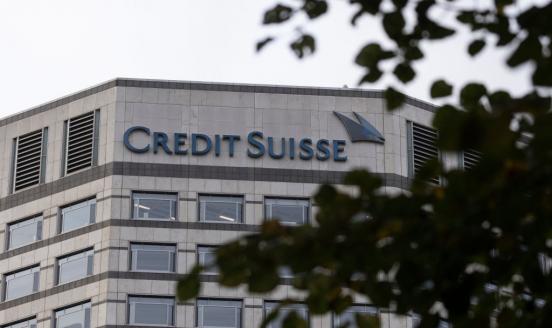A tangled tale of bank liquidation in Venice
What can we learn about the Italian banking sector from the decision to liquidate Veneto Banca and Banca Popolare di Vicenza? Silvia Merler sees a ten
The long and troubled journey of Veneto Banca and Banca Popolare di Vicenza (BPVI) has come to an end. The conclusion of the story highlights once again a pattern that has characterised the Italian approach to banking problems over the past years. The distinctive features of this approach are a desire to postpone solutions to long-lived problems (like MPS) and a tendency to subordinate economic to political logic. This raises questions at both the Italian and the EU level.
Veneto and BPVI were due to launch a capital raise in April 2016. If the operation had failed - as it was widely anticipated - the banks would have been put into resolution and subject to the required bail-in. On 11 April, the creation of a new bank-funded backstop was announced. This fund – named Atlas – ended up becoming the majority shareholder in the two banks.
By acting as an underwriter of last resort, Atlas prevented bank resolution in the short run, but it also spread the risk across the balance sheets of the rest of the Italian banking sector. The cost of that is now evident, as some of the participating banks have been writing off the value of their stakes in Atlas (in some cases at a loss). And in any case, Atlas did not end the two banks’ problems. Both announced in 2017 that they would need yet more capital.
This raised the thorny question of how to deal with retail bondholders. Initially, the government tried to obtain a precautionary recapitalisation. This option is based on the assumption that the banks are systemic, as the aim is “to remedy a serious disturbance in the economy of a member state and preserve financial stability”.
But the extraordinary public support allowed in precautionary recapitalisation cannot be used to offset losses that the institution has incurred or is likely to incur in the near future. So, in order to do a precautionary recapitalisation and be able to spare the retail senior bondholders, it would have been necessary to find private capital willing to plug the hole.
But no Italian bank was eager to do it. This is hardly surprising. It is not the first time that Italian banks have been called to the rescue of the weakest links in the system and previous episodes have not exactly been a success. After all, the two Venetian banks were supposed to be fine after Atlas recapitalised them with other Italian banks' money but they were not.
In the absence of private investors, one option would have been resolution. But this would have required bailing in senior bondholders, which in the Italian case includes a large number of retail clients to whom the banks mis-sold the bonds. So, like in all good pieces of theatre, the impasse is resolved by a deus ex machine – here embodied as Intesa San Paolo, Italy’s largest retail bank.
Intesa offered to buy the “good” parts of the two Veneto banks for a symbolic sum of 1 euro. All the non-performing loans (NPLs), equity and junior debt will be bailed in. Equity is mostly held by the Atlas fund, whose participating banks have already started to write-off their stakes. Junior bondholders - about 200 million - will be bailed-in and reimbursed afterwards (as in Etruria & co.).
Many have compared the deal to the resolution of Popular, but it is more reminiscent of Banca Romagna Cooperativa (BRC), a small Italian lender liquidated in July 2015. BRC’s assets and liabilities were transferred to Banca Sviluppo, part of the ICCREA Group. In the process, BRC equity and junior debt were left behind in the liquidation estate. The operation was conducted under national insolvency law by selling only parts of assets and liabilities out of liquidation (gone concern). In that case, junior bondholders were reimbursed by the Italian mutual sector’s Institutional Guarantee Fund “to preserve the reputation of the sector”.
Intesa is striking a very good deal, as it made its commitment conditional on the operation being capital-neutral for its balance sheet. To this effect, it will receive a cash injection from the state of about €4.8 billion – covering, among other things, the cost of redundancies - plus 400m in guarantees against the risk that some of the credits acquired will not be paid. Intesa will also be transferred the Deferred Tax Credits of the two banks. Moreover, the state will provide guarantees of a maximum of about €12 billion to cover losses from NPLs. The actual bill will thus only be known in the future. This money will not increase the Italian debt, as they are part of the €20 billion earmarked for banking issues last year.
This operation is possible because the banks will not be resolved but liquidated, thus opening the door to liquidation aid. In the absence of an EU insolvency law, liquidation happens under national insolvency frameworks, which in this case will be the Italian “forced administrative liquidation”, managed by the Bank of Italy. For a bank to be liquidated, the Single Resolution Board (SRB) has to decide that resolving it is not in the public interest and this entails - among other things - an assessment that the failure is not likely to result in significant adverse effects on financial stability.
This is what the SRB states about the two banks, but it raises question about Italy’s initial pursuit of precautionary recapitalisation based on an argument of systematicity. Were these banks systemic or not? If yes, why are they not subject to resolution? If not, why ask for precautionary recap in the first place? The government decree states that “there is an extraordinary need and urgency to adopt measures aimed at ensuring the orderly exit of the banks from the market and avoiding a serious disturbance in the economy of the areas where they operate”, which in a way seems to reinstate the public interest negated by the SRB, but without the consequences of it.
A second question is whether this is to some extent a pawn sacrifice. This liquidation in fact frees up funds of Atlas-2 (a successor of Atlas), which was supposed to invest €450 million in the securitisation of the Venetians’ NPLs. In the liquidation this will no longer be necessary and Atlas-2 could then invest more in securitising the junior tranche of MPS’ NPLs, which is a prerequisite for MPS to get precautionary recapitalisation. That junior tranche is worth €1.6 billion, but earlier this month there were doubts this could be achieved without the participation of equity funds that have recently backtracked. Now Atlas-2 would have enough money to do the job and prevent an unravelling of the MPS deal.
A third question concerns senior bondholders. The European Commission’s communication states that senior bondholders will not have to contribute to the burden sharing, as written in the 2013 Banking Communication. But an explainer from the Bank of Italy - which manages the Italian forced administrative liquidation - states that under that procedure “all creditors, so not just the subordinated bondholders, would be reimbursed only after the liquidation of the bank’s assets, most likely partially and after years”. Today's government decree does not explicitly prevent their transfer to Intesa but we will need more clarity in the coming days.
Overall, this episode confirms a pattern in the management of Italian banking sector problems over the past years. Authorities try to kick the can down the road and often let political considerations outweigh economic issues. We have seen this in the delay of MPS’ recapitalisation until after the constitutional referendum, in the creation of Atlas, and in the never-ending effort to shield retail junior bondholders to whom the sale of those product should have instead been better prevented. And we see it again here, in the use of generous liquidation aid. Some in Italy will see this last turn as a happy ending. Others will see it for what it actually is: a political choice. In Brussels, this episode will perhaps finally demonstrate that harmonising bank insolvency law is an indispensable complement to BRRD, as argued strongly by others before. As long as this is not done, the door remains open for the use of national insolvency frameworks to escape from resolution.



